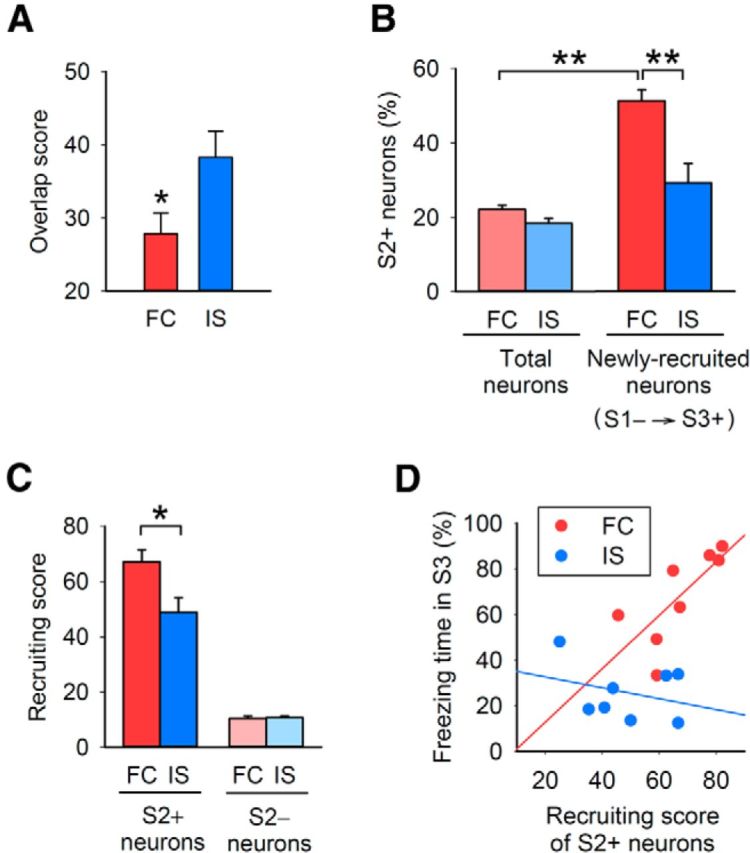Figure 4.

Fear conditioning alters a context-responsive BLA neuronal ensemble based on the neuronal activity during fear conditioning. A, BLA neurons that were active in session 3 overlapped less with those that were active in session 1 in the FC group compared with the IS group (Student's t test, t(14) = 2.3, p = 0.039). B, BLA neurons newly recruited into the context-responsive ensemble displayed preferential activity in session 2 depending on fear learning (repeated-measures ANOVA, F(1,14) = 11.0, p = 0.0051; total vs newly recruited neurons in the FC group, p = 1.5 × 10−5). C, The activities of individual BLA neurons during fear conditioning predicted their recruitment into the context-responsive ensemble (F(1,14) = 7.08, p = 0.019; S2+ (FC) vs S2− (FC), p = 0.00062; S2+ (FC) vs S2+ (IS), p = 0.021). D, The recruiting effect of activity during fear conditioning in the BLA correlated with the strength of fear memory expression (Pearson's correlation coefficient, r = 0.74, t(7) = 2.7, p = 0.036; Z-test, FC vs IS, z = 2.0, p = 0.023); **p < 0.01, *p < 0.05.
